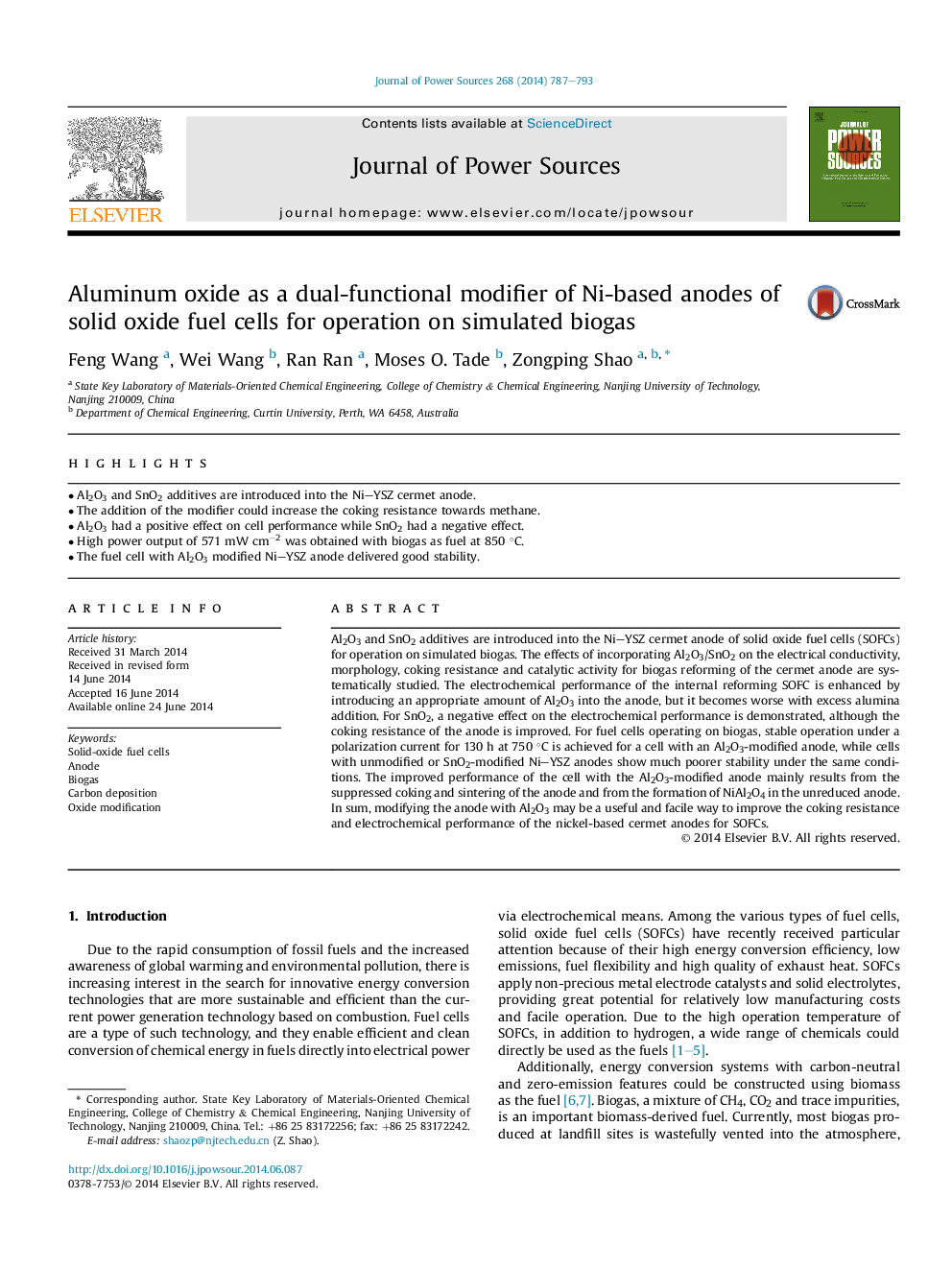| Article ID | Journal | Published Year | Pages | File Type |
|---|---|---|---|---|
| 7736188 | Journal of Power Sources | 2014 | 7 Pages |
Abstract
Al2O3 and SnO2 additives are introduced into the Ni-YSZ cermet anode of solid oxide fuel cells (SOFCs) for operation on simulated biogas. The effects of incorporating Al2O3/SnO2 on the electrical conductivity, morphology, coking resistance and catalytic activity for biogas reforming of the cermet anode are systematically studied. The electrochemical performance of the internal reforming SOFC is enhanced by introducing an appropriate amount of Al2O3 into the anode, but it becomes worse with excess alumina addition. For SnO2, a negative effect on the electrochemical performance is demonstrated, although the coking resistance of the anode is improved. For fuel cells operating on biogas, stable operation under a polarization current for 130 h at 750 °C is achieved for a cell with an Al2O3-modified anode, while cells with unmodified or SnO2-modified Ni-YSZ anodes show much poorer stability under the same conditions. The improved performance of the cell with the Al2O3-modified anode mainly results from the suppressed coking and sintering of the anode and from the formation of NiAl2O4 in the unreduced anode. In sum, modifying the anode with Al2O3 may be a useful and facile way to improve the coking resistance and electrochemical performance of the nickel-based cermet anodes for SOFCs.
Related Topics
Physical Sciences and Engineering
Chemistry
Electrochemistry
Authors
Feng Wang, Wei Wang, Ran Ran, Moses O. Tade, Zongping Shao,
